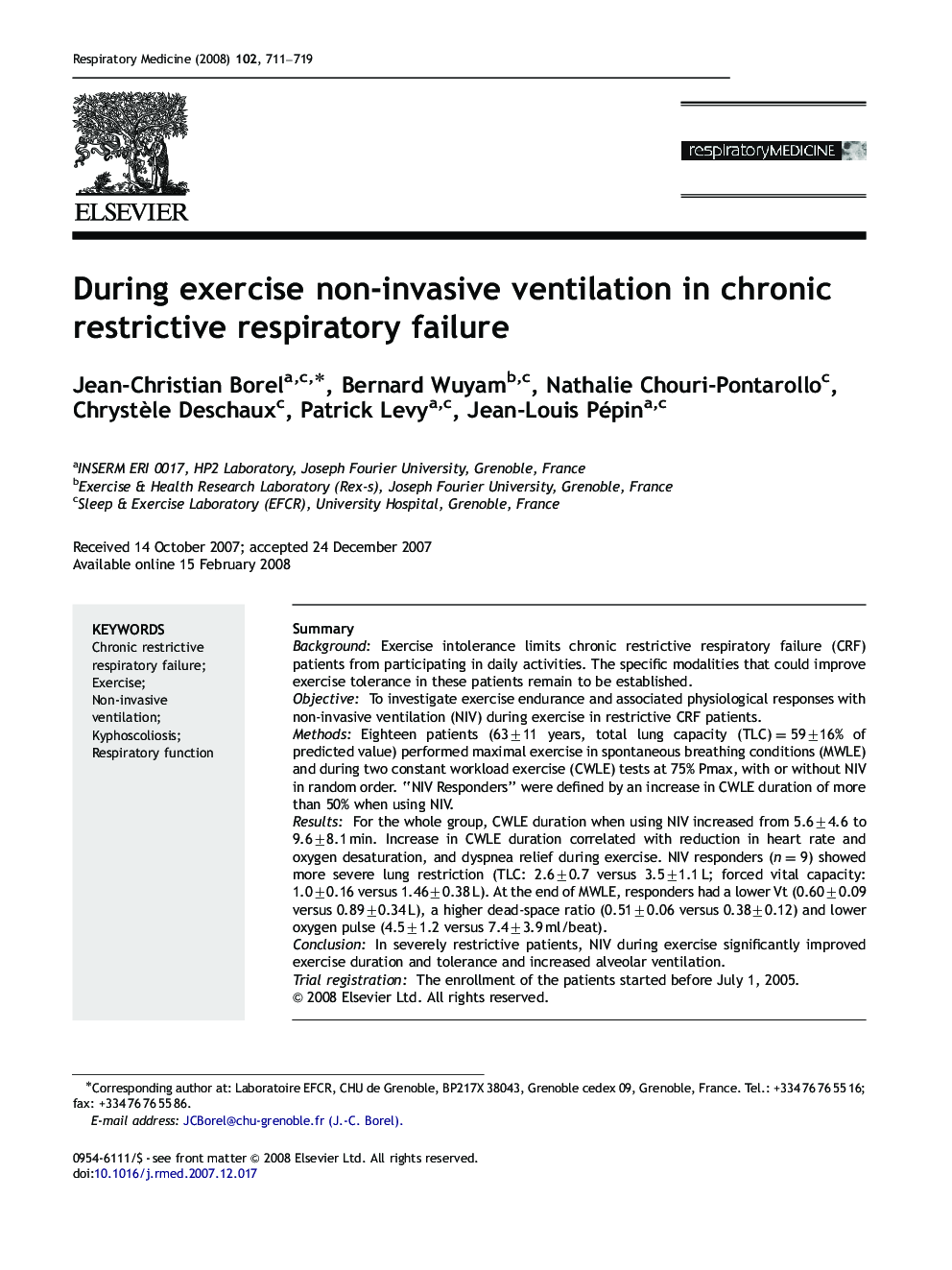| Article ID | Journal | Published Year | Pages | File Type |
|---|---|---|---|---|
| 4211175 | Respiratory Medicine | 2008 | 9 Pages |
SummaryBackgroundExercise intolerance limits chronic restrictive respiratory failure (CRF) patients from participating in daily activities. The specific modalities that could improve exercise tolerance in these patients remain to be established.ObjectiveTo investigate exercise endurance and associated physiological responses with non-invasive ventilation (NIV) during exercise in restrictive CRF patients.MethodsEighteen patients (63±11 years, total lung capacity (TLC)=59±16% of predicted value) performed maximal exercise in spontaneous breathing conditions (MWLE) and during two constant workload exercise (CWLE) tests at 75% Pmax, with or without NIV in random order. “NIV Responders” were defined by an increase in CWLE duration of more than 50% when using NIV.ResultsFor the whole group, CWLE duration when using NIV increased from 5.6±4.6 to 9.6±8.1 min. Increase in CWLE duration correlated with reduction in heart rate and oxygen desaturation, and dyspnea relief during exercise. NIV responders (n=9) showed more severe lung restriction (TLC: 2.6±0.7 versus 3.5±1.1 L; forced vital capacity: 1.0±0.16 versus 1.46±0.38 L). At the end of MWLE, responders had a lower Vt (0.60±0.09 versus 0.89±0.34 L), a higher dead-space ratio (0.51±0.06 versus 0.38±0.12) and lower oxygen pulse (4.5±1.2 versus 7.4±3.9 ml/beat).ConclusionIn severely restrictive patients, NIV during exercise significantly improved exercise duration and tolerance and increased alveolar ventilation.Trial registrationThe enrollment of the patients started before July 1, 2005.
